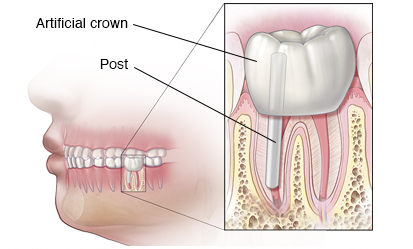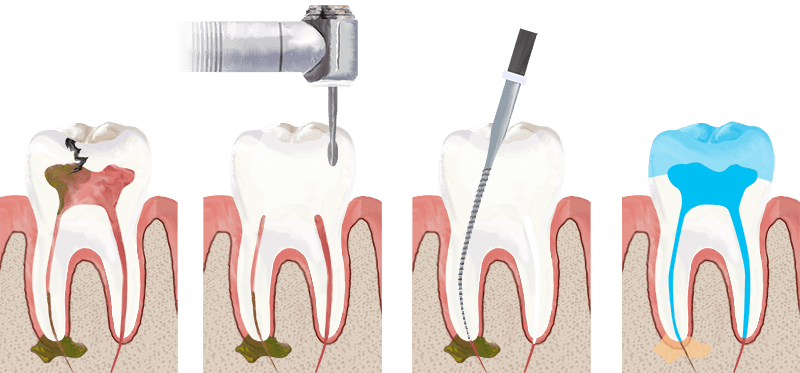A root canal is the space within the root of a tooth. It is part of a naturally occurring space within a tooth that consists of the pulp chamber (within the coronal part of the tooth), the main canal(s), and more intricate anatomical branches that may connect the root canals to each other or to the surface of the root. The smaller branches are most frequently found near the root end (apex) but may be encountered anywhere along the root length. There may be one or two main canals within each root.
Some teeth have more variable internal anatomy than others. This space is filled with a highly vascularized, loose connective tissue, the dental pulp. The dental pulp is the tissue which forms the dentin portion of the tooth. The formation of secondary teeth (adult teeth) is completed by 1-2 years after eruption into the mouth. Once the tooth has reached its final size and shape, the dental pulp’s original function ceases for all practical purposes. It takes on a secondary role as a sensory organ.
 Root canal is also a colloquial term for a dental operation, endodontic therapy, wherein the pulp is cleaned out, the space disinfected and then filled.
Root canal is also a colloquial term for a dental operation, endodontic therapy, wherein the pulp is cleaned out, the space disinfected and then filled.
At the center of a tooth is a hollow area that houses soft tissue, known as pulp or nerve. This hollow area contains a relatively wide space in the coronal portion of the tooth called the pulp chamber. This chamber is connected to the tip of the root via narrow canal(s); hence, the term “root canal”. Human teeth normally have one to four canals, with teeth toward the back of the mouth having more. These canals run through the center of the roots like pencil lead runs through the length of a pencil. The pulp receives nutrition through the blood vessels and nerves carry signals back to the brain to warn of adverse events and circumstances.
For a person who feels tooth pain or discomfort, a root canal may be indicated, and a qualified dentist or more preferably an endodontist (root canal therapy specialist) should be consulted in a timely manner.


